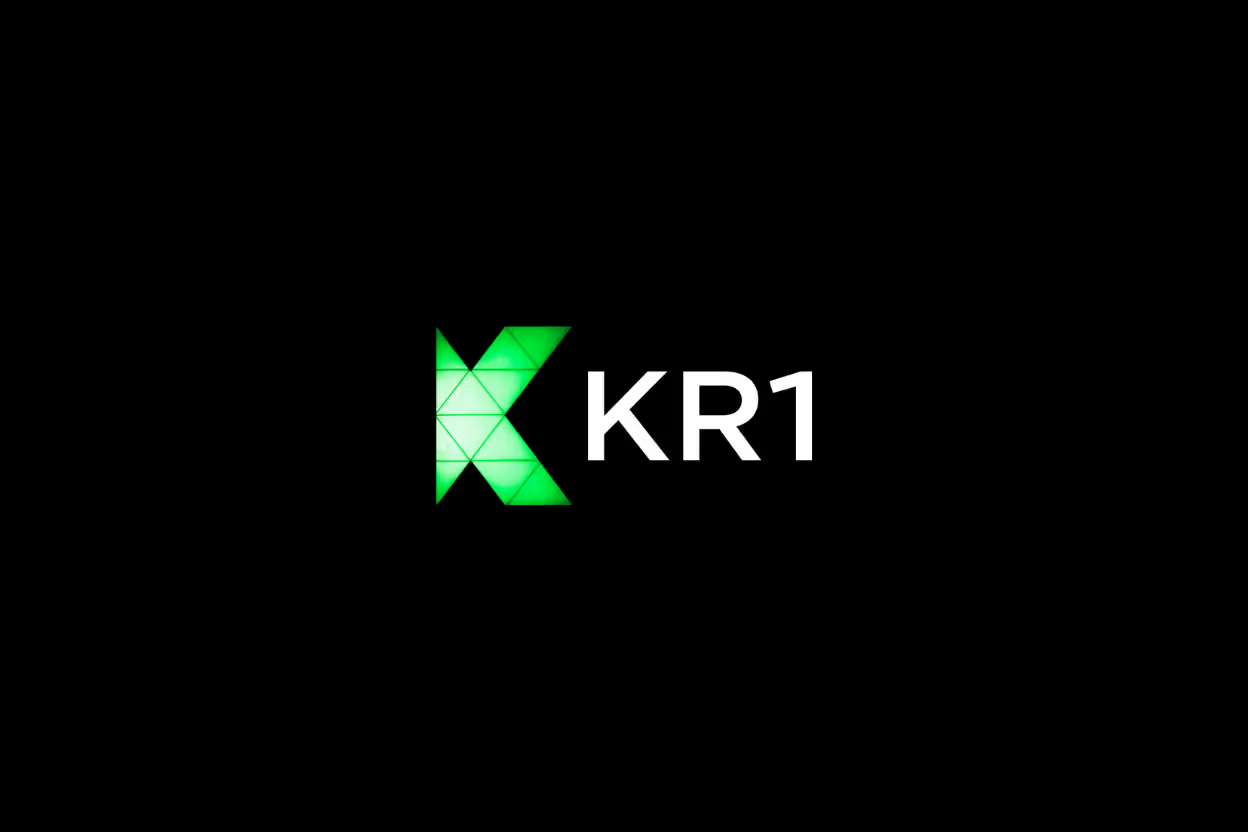Some of crypto’s biggest moments start far from the spotlight. Teams keep ideas close and code quietly, often for years, before a launch that turns heads almost overnight. Building in silence isn’t just about secrecy, it’s a strategy, and for founders and VCs, it changes how opportunity looks and when it shows up.
Why do some of the best projects hide their progress until the big reveal? How does this approach help them avoid early scrutiny, ship fast, or even beat crowded competition? In this article, you’ll see how staying quiet can protect innovation and draw focus when momentum matters most. If you’re considering when, how, or even why to go stealth, these stories and insights will help you decide if silence is your strongest tool.
The Power of Building in Silence
Building in silence isn’t just about hiding code or ducking from competitors. It’s a disciplined way to get the hard work done far from outside noise. By keeping progress quiet until you’re ready, teams give themselves space to focus, protect new ideas, and build deeper connections that matter once it’s time to launch. Is it always easy? Of course not. But the impact can shift the odds toward a real breakthrough.
Minimizing Distractions and Hype
When teams keep things quiet, they cut out the swirl of opinions and hype that can block real progress. Early publicity in Web3 can be a double-edged sword. While buzz feels exciting, it often pulls attention away from what matters most—building a working product.
- Open exposure invites critics and “backseat drivers” to weigh in, causing stress and endless pivots.
- Loose lips make teams chase trends instead of solving the core problem they set out to fix.
- Early hype in crypto can spark wild speculation, setting expectations too high before the tech is ready.
By building in silence, teams set their own pace. They avoid FOMO, ignore market noise, and focus on making every line of code count. How often has a project lost steam because founders burned out from Twitter debates or tried to please everyone before launch?
Protecting Novel Ideas and IP
Stealth isn’t just about staying humble; it’s about guarding your edge. In fast-moving crypto and blockchain projects, a great idea quickly becomes the next template for copycats. Launching under the radar gives founders crucial time to secure their intellectual property and work out the kinks before the world is watching.
- Silence helps teams file patents, plan smart tokenomics, or build unique tech that can’t be easily cloned.
- Competitors often scrape GitHub, Discord forums, or public project updates. Taking a quieter route keeps your blueprint safe until you’re ready to reveal it.
- For VCs, this silence is attractive since it reduces risk. They know their investment stays out of a copycat’s sights until the moat is real.
Why announce every milestone if it exposes your blueprint? Sometimes, the best way to shield originality is to keep it close.
Building Community in the Background
Even when public channels are quiet, the smartest teams work to connect with real users, early supporters, and future advocates. Building a strong foundation doesn’t require a megaphone. Closed test groups, private Discords, or “silent” partnerships quietly shape a project’s culture and trust, without the baggage of hype.
- Invite-only betas let teams collect raw feedback from people who care about the mission, not the marketing.
- Silent partnerships—like collaborations with trusted developers or advisors—set groundwork for bigger moves later.
- Tightly-knit groups focus on shared goals, making it easier to spot what needs fixing before going wide.
Ever wonder how some projects launch and suddenly have an army of fans? The answer is usually months (or years) of quiet relationship building in the background.
Quiet doesn’t mean alone. The power of building in silence comes from picking who you let in, why they care, and how they guide you to the next milestone—long before the spotlight finds you.
When Everything Explodes: The Moment of Breakout
Everything changes in an instant when a crypto project finally steps into the light. After months or years of heads-down work, the move from stealth to public can feel like a dam breaking. All at once, the team, users, and investors face a rush of attention that can make or break the next chapter. If you’re planning your own launch, it’s key to know what sets off this tipping point, how founders navigate sudden momentum, and how they handle doubt that floods in with success.
Triggers for Going Public
Teams rarely go public on a whim. There’s usually a clear signal or trigger that sets off the move from silent grinding to bold announcement. Here are common reasons a project leaves stealth mode:
- Product readiness: Once the main features work smoothly and core smart contracts are fully tested, founders decide it’s time to show the world.
- Network effect: A critical mass of early adopters needs public access to truly grow the platform.
- Organic buzz: Leaks, rumors, or viral tweets can “out” a project, forcing a reveal ahead of schedule.
- Need for resources: Teams may need more users, liquidity, or outside feedback to evolve. Sometimes a public fundraising round, token sale, or incentive campaign accelerates the timeline.
Does every project wait for total perfection? Definitely not. Yet smart founders know the risks of going live too soon. Picking the right trigger isn’t just about hype, it’s about setting the stage for sustainable growth and proving the tech holds up outside the lab.
Managing Sudden Growth and Attention
The floodgates open fast after launch. With new users come crashing servers, bug reports, and a tidal wave of press. Handling this storm is another test for any team. Here are some proven tactics:
- Clear communication: Public-facing channels like X (Twitter), Discord, and Telegram need updates in real time. Setting expectations keeps stress low.
- Scaling fast: Many teams line up extra infrastructure or bring in support via contractors before launch to avoid outages.
- Immediate bug bounties: Launching a public reward for catching issues helps crowdsource fixes and builds trust.
Short, memorable stories shape crypto history. When Ethereum first launched, the network was hit with more traffic than expected, but transparency and an engaged dev community kept things moving. In a different case, the Blur NFT marketplace handled its sudden attention by launching rapid-fire security audits and keeping daily communication. Founders who stay open, present, and ready to course-correct keep the chaos from turning into a crisis.
What happens if you suddenly get hundreds of signups per minute, or find yourself on the front page of Crypto Twitter? Plan for this rush ahead of time. Think through which team members will handle user questions, who will triage technical problems, and how you’ll keep your cool when screens start lighting up with feedback.
Turning Skepticism Into Momentum
No matter how strong the launch, skepticism creeps in. From professional critics to crypto Twitter, outsiders love to question new entrants. How do successful projects flip this doubt into growth?
- Show, don’t tell: Live demos, open-source code, and transparent roadmaps win more credibility than words alone.
- Build with the early adopters: Teams can host AMAs, share progress on GitHub, and thank initial users publicly. People trust projects that make them part of the story.
- Consistent delivery: Rolling out small improvements fast proves the team isn’t all talk.
Sustaining positive momentum is about what happens after the big reveal. Teams that respond quickly to questions and criticisms, fix bugs in public, and keep improving turn their rough edges into proof of commitment. As the saying goes, skeptics are just future believers waiting for enough evidence.
Need to keep backers engaged after the first wave? Consider regular updates, transparent voting on new features, or even running healthy debates in your community channels. Turning raw attention into long-term support is a lot like compounding interest: fast action and honest updates pay off again and again.
Have you mapped out how you’ll respond to doubt? If not, now is the time to put together a plan so that your breakout moment doesn’t just swing open the doors—it lays the first stones of a path forward.
Lessons for Founders: Risks and Rewards of Stealth
Choosing stealth mode is a major call for any crypto founder. This path blocks out noise and buys time for deep work, but it also means making trade-offs on feedback, fundraising, and community-building. If you’re weighing a silent build, spotting the right signals and preparing for both upside and downside is key.
Signs Stealth Might Be for You: Red Flags and Green Lights
Founders often wonder if stealth is the right move or just an excuse to hide slow progress. Here are some signals to help decide:
Green lights for going stealth:
- You have a truly novel idea that’s easy to copy.
- Your tech or tokenomics are unique and need to stay private while you get IP or contracts in place.
- Building requires tight focus or rapid pivots without outside voices distracting the team.
- There’s a risk of regulatory scrutiny if your idea is public too soon.
Red flags to steer away:
- Your team lacks experience and relies heavily on outside feedback.
- The product only succeeds with early community traction and public testing.
- Fundraising depends on building social proof or hype to attract backers.
- Internal alignment is weak—stealth can hide issues instead of fixing them.
What signals tip the scale for your project? Are you keeping secrets for good reason, or just postponing hard conversations?
Risks: From Isolation to Fundraising
Stealth isn’t free. While quiet building can protect ideas, it also creates new risks for founders:
- Limited feedback: With fewer early testers and no public roadmap, you risk missing blind spots. Bugs, confusing designs, or market fit problems can go unnoticed until late.
- Harder fundraising: Many VCs look for traction, public buzz, or proof of community. Stealth teams often struggle to share compelling metrics or stories with investors.
- Team drift: Long periods in the bunker can dull urgency or make team members feel disconnected.
- Missed timing: Crypto moves fast—wait too long and the market could shift, or a competitor could launch first.
To manage these risks:
- Run small, private betas with trusted users;
- Build a panel of industry mentors for off-the-record feedback;
- Share updates privately with select investors to keep some momentum;
- Set hard deadlines and regular check-ins to keep urgency high.
Is your team talking to enough outsiders, even if quietly? Are you checking for bias or wishful thinking inside the echo chamber?
Rewards: Focus, Flexibility, and Security
Stealth building has strong upside for the right founder and project. When it works, it offers:
- Undivided focus: Teams skip the endless cycle of responding to feedback, changing roadmaps, or chasing hype. The work runs deep and fast.
- More flexible pivots: If your idea needs fast change, stealth lets you shift direction quietly. There’s no public timeline to walk back or crowd to disappoint.
- Extra security: Intellectual property, token mechanics, and unique concepts stay safe until you’re ready to show your cards, lowering the risk of being cloned or attacked.
To get the most from these rewards:
- Block out regular “deep work” time with no outside distractions.
- Keep your small group of private testers close and honest—what secrets are worth keeping, and what feedback is worth risking some noise?
- Use stealth time to tighten your security, run internal audits, and prepare robust documentation for launch.
Is your team making progress faster, or just staying quiet? Are you using the silence to solve the core challenges, or just avoiding hard questions?
By seeing both sides—risk and reward—founders make stealth a smart strategy rather than a crutch. Your choice sets the cadence for everything that comes next.
What to Do When It Explodes
The surge after a stealth launch often takes teams by surprise. Spotlight, user influx, and high-stakes decisions can spark chaos or clarity. Making it through the explosion is more than luck. Projects that last expect turbulence and prep their technical and human systems to meet the moment. Below, here’s how strong teams set up, support, and safeguard what they’ve built—long after the first headlines hit.
Prepping Infrastructure for Scale
Cryptocurrency and Web3 launches rarely roll out quietly—server demands and user requests spike overnight. Many teams have learned this the hard way. Thinking ahead keeps your project from “crashing” while others are celebrating.
Before going public, ask: Can our platform withstand a 10x or 100x spike in activity? Build technical readiness with these steps:
- Load test all systems. Simulate real attack traffic and user flows. Know your weak points before they blow up.
- Automate monitoring. Use real-time dashboards to spot issues as early as possible. Metrics like API response times and failed requests should trigger alerts for your team.
- Implement redundancy. Set up backup nodes, extra validators, or cloud autoscaling to keep uptime high during traffic spikes.
- Document a rollback plan. Sometimes the safest path is to momentarily pause new signups or transactions if bugs show up—map out thresholds and decision-makers now.
- Secure key assets. Ensure private keys, smart contracts, and sensitive endpoints have layered security, including hardware wallets and multi-signature access where possible.
Are you ready for traffic from global users, not just your test group? Late nights and last-minute fixes may still pop up, but prepping infrastructure early separates projects that shine from those that fizzle out fast.
Building a Response Team
With growth comes waves of user support requests, bug reports, and sometimes security threats. No one can handle it all alone. Every successful crypto project builds a human firewall as sturdy as the tech backend.
Here’s what to prioritize:
- Support channels ready at launch. Set up Discord, Telegram, or dedicated web forms for issues. Train team members on FAQs and escalation paths.
- Security experts on call. Line up an emergency response protocol. Know which team members can act fast if a vulnerability goes public.
- Transparent communications. Prepare draft messages for different scenarios—major bug, delayed rollout, or unexpected feature breakdown. Open updates retain user trust.
- Assign clear roles. Who answers users? Who manages incident response? Who speaks to press or investors? Make sure everyone knows where to jump in.
- Monitor public sentiment. Track core channels, social feeds, and forums for rumors or dissatisfaction. Respond quickly, especially if misunderstandings arise.
Projects are remembered for how they handle pressure. Regularly review your playbook. If one person disappears, does the rest of the team cover every major need?
Maintaining Vision and Values Post-Launch
A rush of press and user adoption can tempt founders to drift from their core mission. Sometimes, financial incentives or the glare of attention push teams off course, risking what made the project special in the first place.
To keep the project anchored in its beliefs:
- Codify your values. Share a brief, public statement or internal document on what matters most—security, decentralization, privacy, or another principle.
- Set up regular retrospectives. Meet as a team post-launch. Ask: Are decisions aligning with our original goals?
- Limit “shiny object” distractions. Every new partnership or listing can feel urgent, but not every one truly matches your ethos. Create a checklist for opportunities that must fit your standards.
- Involve early believers. Keep your founding team, advisors, and first users in decision cycles. Honest feedback helps spot drift early.
- Reward alignment, not just results. Celebrate progress that matches your values just as much as raw growth numbers.
Anyone can get swept up when momentum hits. Values are the map that helps you find your way back when things move too quickly. Will your project’s original story still ring true a year from now? Hold tight to that answer as outside pressures build.
What drives your project, even before and after the limelight? Taking time to answer now will pay off in trust and resilience later.
Conclusion
Stealth serves founders best when it's a conscious choice rather than a reflex. If you are weighing the silent route, focus on what matters most: protecting your edge, delivering real results, and knowing when to let others in. Every project must strike the right balance between privacy and progress. Have you considered how you’ll connect with early users, or what risks you’re willing to take with publicity?
Strong projects aren’t just defined by what they build in private, but how they handle the spotlight when it arrives. Take time to reflect on your signals, set clear steps for your team, and keep your core values steady as growth speeds up.
Founders and VCs: What has your experience been with building in silence? Are there unseen risks or rewards you’d add for others to consider? Share your stories or questions below—your insights may help the next wave make better decisions under pressure.
Thank you for reading and trusting your journey with this community. Your reflections shape the smartest conversations.









